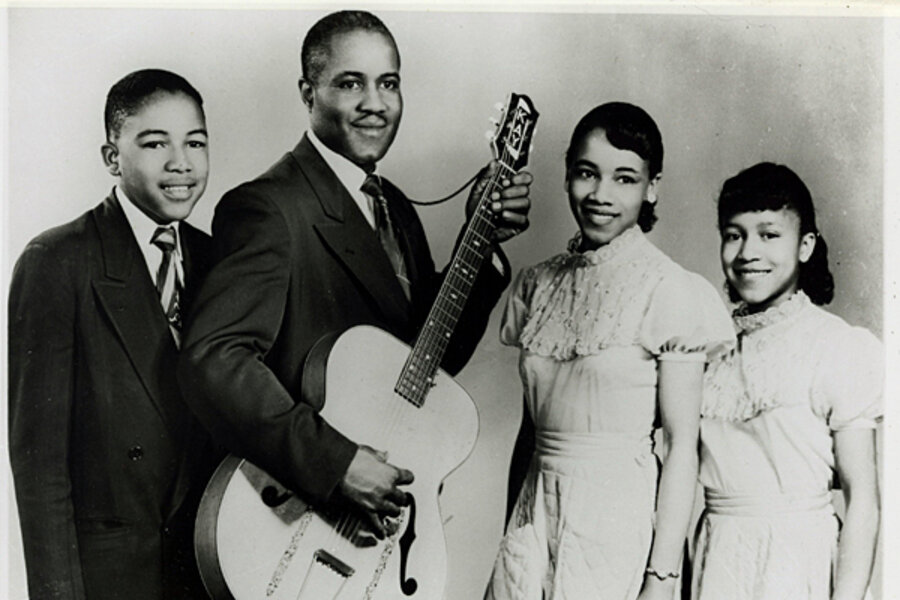Rejoice and Shout: movie review
Loading...
The wonderful new gospel music documentary "Rejoice and Shout" opens not with an exploration of sound but of faith. Smokey Robinson says he prays to God all day long. Speaking of the people who faint or lose themselves in the religion, he says: "When I was a kid, that was one of the reasons I really didn't go to church with my mom, because, at that age, I didn't understand the impact of the Holy Spirit. That frightened me, until I had grown and the Holy Spirit impacted me."
We hear from Mavis Staples: "I believe if I ask the Lord for something, it is coming. It might not be today; it might be tomorrow. But when it comes, it's gonna be right on time."
And Pastor Andraé Crouch: "If we really heard the voice of God, we'd be reduced to juice. The vibrations of his voice would reduce us to liquid. So He has to use other people to speak his word."
Because I was expecting the usual historical approach to gospel music, these hosannas at first seemed off-putting. But really, they are essential. As the producer Joe Lauro has explained: "The No. 1 thing you need to know before anything else is you really have to see what these people feel about God and how they express it in the music." They don't call it gospel music for nothing.
This is not to say that "Rejoice and Shout" skimps on the history – quite the opposite. There have been other terrific documentaries about gospel – like the concert film "Gospel" and George Nierenberg's "Say Amen, Somebody," which focused on "Professor" Thomas A. Dorsey, who wrote the lyrics for "Take My Hand, Precious Lord," and "Mother" Willie Mae Ford Smith – but this is the first gospel film to draw on an incalculably rich archive of material going back more than 100 years.
A fan and collector of American music, Lauro is also the founder of a stock footage library that is home to more than 45,000 hours of vintage television clips, feature films, and newsreels. In 10 years he amassed more than 150 hours of gospel material. "Rejoice and Shout," which was directed by Lauro's frequent collaborator Don McGlynn, represents the cream of that footage.
And what footage! The point is made that gospel, as opposed to other forms of music, was recorded early, both on disc and on film, perhaps because it was considered "God's music" and therefore important to document. We hear a rare 78 r.p.m. record from 1902 of the Dinwiddie Colored Quartet, who traveled the country playing tent shows and black vaudeville, singing "Gabriel's Trumpet." Says Lauro: "This is about as close as you can get to the way it sounded during slavery days." Lauro and McGlynn understand, too, that these clips must be experienced whole. They let the music unfold in real time, not snippets.
From a 1928 Fox Movietone newsreel, we see the fabled Norfolk Jubilee Quartet, taking a break from oyster shucking in Richmond, Va., singing "Do You Call That Religion." The Golden Gate Jubilee Quartet, from the 1930s, is shown mixing jazz elements into gospel, as Thomas A. Dorsey also did. The gospel historian Anthony Heilbut, interviewed in the film, remarks on how the Jubilee Quartet used their voices as instruments, and how you could always tell the difference on a recording between a white quartet and a black one. In the black quartets, each voice had an individual sound.
In addition to such famous performers as The Staples Singers, the ferociously rough-voiced the Rev. James Cleveland, Shirley Caesar, Crouch, and the legendary Mahalia Jackson, whose voice could indeed "reduce us to liquid," the film features, and in some cases resurrects, the reputations of such groups as The Dixie Hummingbirds, with their intricate vocal arrangements due in large part to Ira Tucker (who was interviewed in the film shortly before he died); and The Swan Silvertones, shown in a clip singing "Only Believe," showcasing its lead singer Claude Jeter and his incomparable falsetto.
Perhaps best of all are the clips of the ecstatically gifted Sister Rosetta Tharpe, who was not only a preacher but a guitarist. In the late 1930s and early '40s she successfully combined gospel with big band and blues arrangements and was so influential that you can see her imprint in everybody from Elvis Presley and Little Richard to Johnny Cash, who always said she was his favorite singer.
The filmmakers don't skimp on the new generation of gospel singers either. They open with 10-year-old Jekalyn Carr, from the Selvy Family, singing “Amazing Grace” with a lived-in soulfulness that is positively unearthly. Because of her youth, she is – more than anybody else in the film – a testament to the momentous spirit that resides in this music. Grade: A (Rated PG for some mild thematic material and incidental smoking.)





